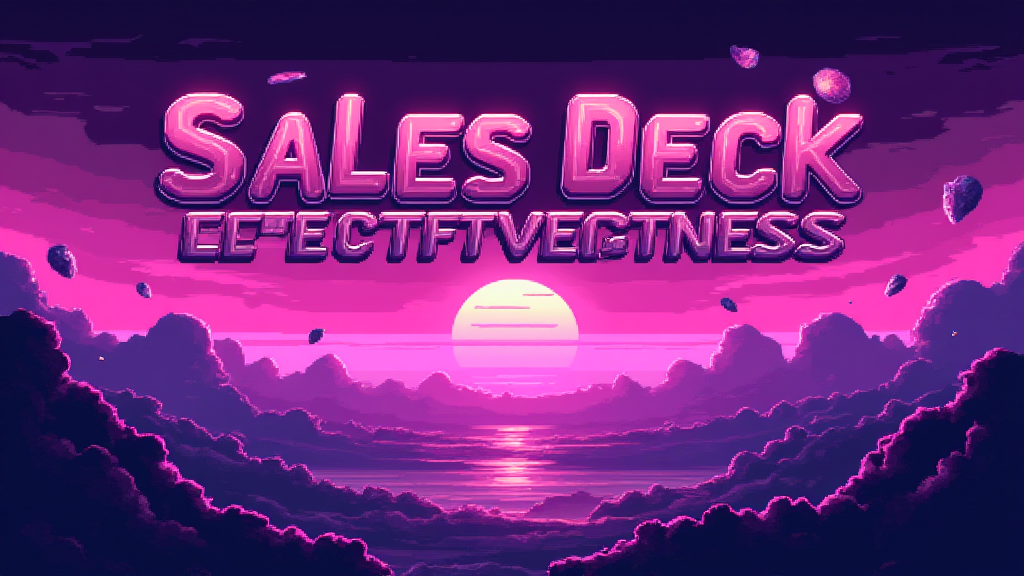Maximizing Sales Deck Effectiveness: Key Strategies

Published on: October 01, 2024
Sales Deck Effectiveness refers to the ability of a sales presentation or pitch deck to engage prospects, communicate value propositions, and ultimately drive conversions. In the competitive world of B2B sales, a well-crafted and effective sales deck can be the difference between closing a deal and losing a potential customer. 💼💡
Why Sales Deck Effectiveness Matters
An effective sales deck serves as a powerful tool in the sales process, offering several key benefits:
- Captures and maintains audience attention
- Clearly communicates product or service value
- Addresses customer pain points and challenges
- Builds credibility and trust
- Facilitates meaningful conversations with prospects
Key Components of an Effective Sales Deck
To maximize sales deck effectiveness, consider incorporating these essential elements:
1. Compelling Opening 🚀
Start with a strong hook that immediately grabs the audience's attention and sets the tone for the presentation.
2. Clear Value Proposition 💎
Articulate your unique selling points and how your product or service solves specific customer problems. For more insights, check out sales effectiveness strategies.
3. Customer-Centric Approach 🎯
Focus on the prospect's needs, challenges, and desired outcomes rather than solely on your product features.
4. Data and Social Proof 📊
Include relevant statistics, case studies, and testimonials to build credibility and demonstrate real-world results.
5. Visual Appeal 🎨
Use high-quality images, infographics, and consistent branding to enhance the visual impact of your deck.
6. Clear Call-to-Action 🏁
End with a strong, specific call-to-action that guides prospects on the next steps in the sales process. Learn about the importance of sales effectiveness to drive conversions.
Measuring Sales Deck Effectiveness
To assess and improve your sales deck's performance, track these key metrics:
| Metric | Description |
|---|---|
| Engagement Rate | Percentage of prospects who actively participate in discussions during the presentation |
| Conversion Rate | Percentage of prospects who take the desired action after viewing the deck |
| Time Spent | Average duration prospects spend reviewing the deck |
| Feedback Score | Ratings or comments from prospects on the deck's clarity and relevance |
Best Practices for Improving Sales Deck Effectiveness
- Tailor content to your audience: Customize your deck for different industries, company sizes, or decision-maker roles.
- Keep it concise: Aim for a deck length of 10-15 slides to maintain audience focus.
- Tell a compelling story: Use storytelling techniques to create an emotional connection with your audience.
- Practice and refine: Regularly update your deck based on feedback and performance metrics.
- Leverage multimedia: Incorporate short videos or interactive elements to enhance engagement.
By focusing on these aspects of sales deck effectiveness, sales teams can significantly improve their ability to connect with prospects, communicate value, and drive conversions. Remember, an effective sales deck is not just about presenting information – it's about creating a compelling narrative that resonates with your target audience and motivates them to take action. 🚀💼
Questions to Consider for Your Sales Deck Strategy
- How well does our current sales deck align with our target audience's needs and pain points?
- Are we effectively measuring and analyzing our sales deck's performance?
- How can we incorporate more customer-centric content and social proof into our deck?
- What steps can we take to ensure consistency in messaging across our sales and marketing materials?
- How often should we review and update our sales deck to keep it fresh and relevant?

















